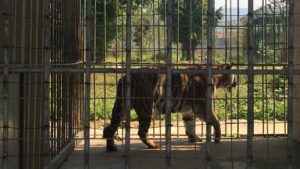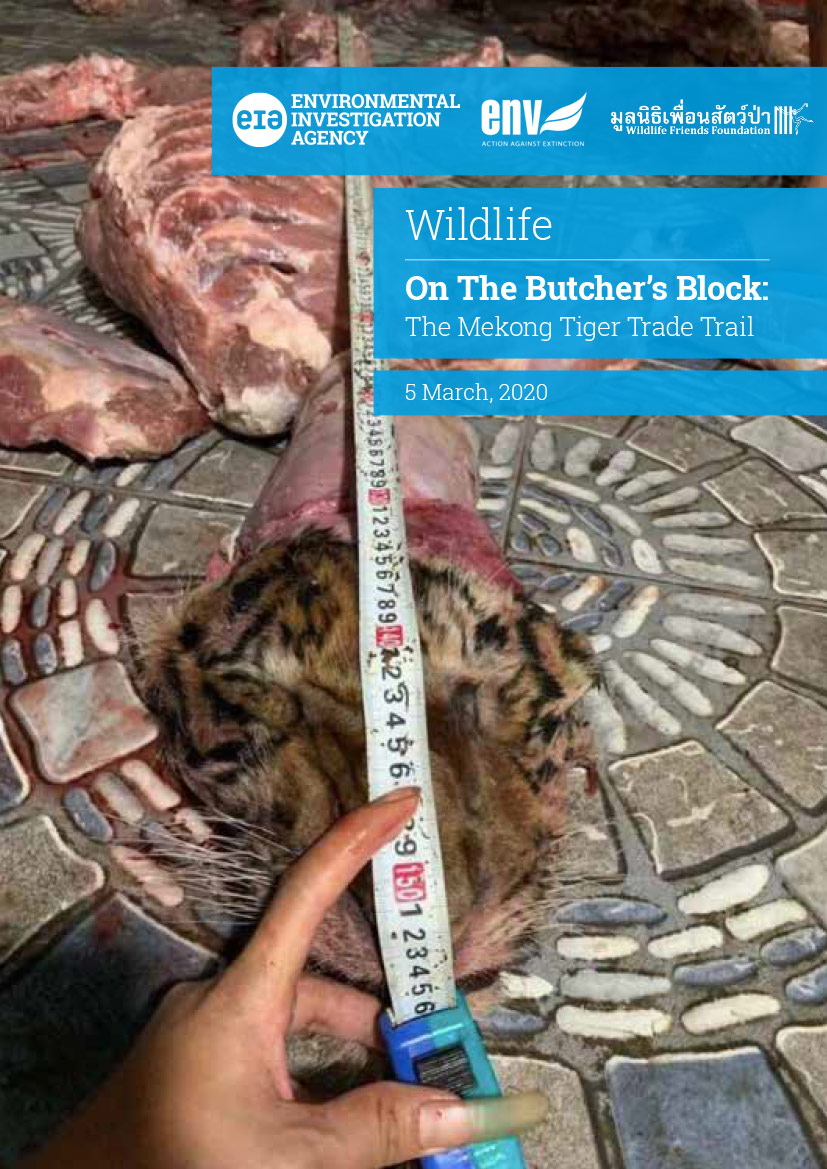Introduction
There are about 4,000 tigers remaining in the wild and poaching is the primary and immediate threat to their survival.
Just in the past 10 years, the wild tiger has been wiped out in Cambodia, Laos and Vietnam, while the population has been decimated by poachers in Malaysia and Myanmar.
This follows a lack of investment, implementation and enforcement by the leaders of countries that have or had tigers, Tiger Range Countries (TRCs), despite commitments made at the International Tiger Forum, hosted by Russian President Vladimir Putin in 2010.
China’s wild tiger population remains perilously close to extinction and in Thailand they are clinging on in parts of their range.
The Tiger Trade Trail
A personal view
Young blogger Olivia Wintersgill shares her thoughts on tiger farming.

Tiger parts
At present, despite repeated calls from the international community for ‘tiger farming‘ countries to end the practice, licensed businesses and criminal enterprises in China, Laos, Vietnam and Thailand continue to churn out tigers.
Whether they die of natural causes or are slaughtered, their skins, bones, teeth and claws are being traded for profit, perpetuating the desirability and acceptability of tiger and other big cat parts and products. This culture of commodification has pervaded legislation and policy, facilitating the expansion of captive tiger facilities, many of which masquerade as ‘zoos’. Trade in parts of captive tigers stimulates demand instead of eliminating it, undermines enforcement efforts and threatens the survival of wild tigers.

Dead tiger cubs soaked in jars of wine with other wildlife and consumed in Vietnam as a traditional remedy
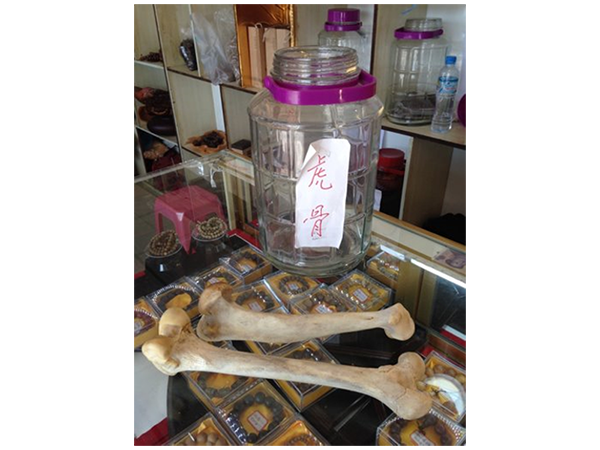
Tiger bone is used in traditional Chinese medicine to treat rheumatism and arthritis

Tiger tail bones are being sold as good luck charms

There are numerous brands of tiger bone wine made in Laos, China, N. Korea, Myanmar and Vietnam. It often purchased as a prestigious gift or a non-financial bribe

Tiger bone wine is made by soaking the skeleton in a tank of wine with other ingredients
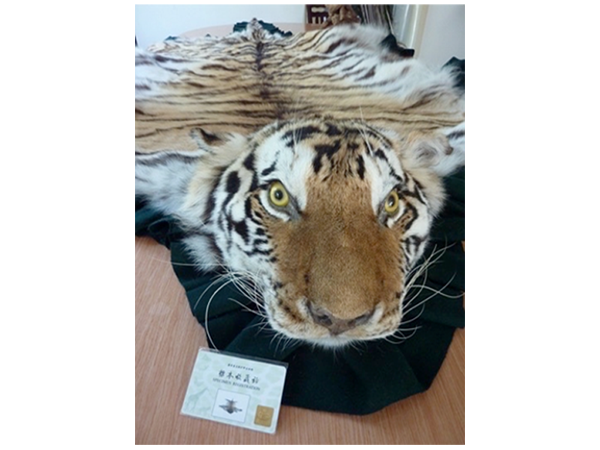
China allows the skins of captive bred tigers to be turned into rugs and taxidermy items. The taxidermist offering this skin to investigators explained how the licensing system could be used to launder illegally sourced skins

Offcuts of skins from tigers butchered for their bones are made into wallets and sold via social media
Thailand
Thailand’s wild tiger population is estimated to be between 150-200 tigers. In 2018, it was estimated there were 1,595 captive tigers in 46 facilities.
In 2019 independent research identified:
- 12 Government-owned zoological, rescue and breeding facilities
- 51 privately owned facilities that are licensed as ‘zoos’
- several individuals who are licensed to privately possess tigers.
In total these account for an estimated minimum of 1,962 tigers.



Laos
In 2019, scientists reported that the wild tiger was extinct in Laos, meanwhile there are an estimated 352-399 captive tigers in six facilities across the country.
The Laos Government has been licensing the commercial breeding of tigers for trade in their body parts since 2002.
In 2013, a tiger ‘zoo’ opened at the Golden Triangle Special Economic Zone (GTSEZ) in Bokeo Province. Despite initial exposés of the open trade in tiger parts and products in 2015, the availability of tiger bone wine, teeth, bone bracelets and tiger meat has subsequently been recorded.



Vietnam
Wild tigers are believed to be extinct in Vietnam, a tragic decline that has been on the cards since 2010, even as wildlife criminals in Vietnam were trafficking tiger parts sourced from the Laos farms, further reinforcing the fact that trade in captive-bred tiger parts has not relieved pressure on the wild population.
Also since 2010, the number of registered facilities with captive tigers has steadily increased from seven in 2010 to 20 in 2019, as has the number of captive tigers in the same period, from 84 to an estimated 296.
These are not specimens that can be reintroduced to the wild and are not part of recognised scientific captive breeding programmes.



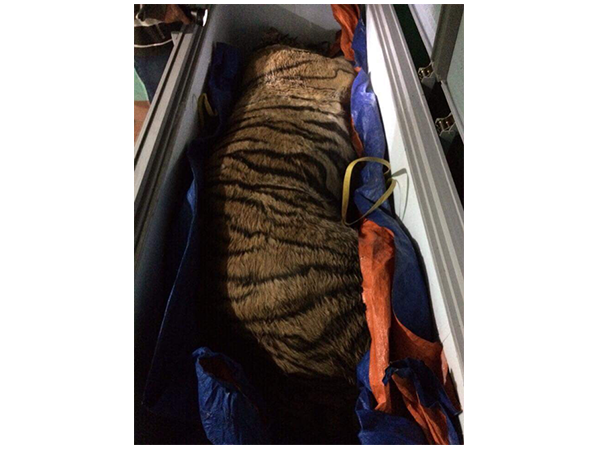
Dead farmed tigers are frozen for shipment by road

Dead tiger cubs soaked in jars of wine with other wildlife and consumed in Vietnam as a traditional remedy
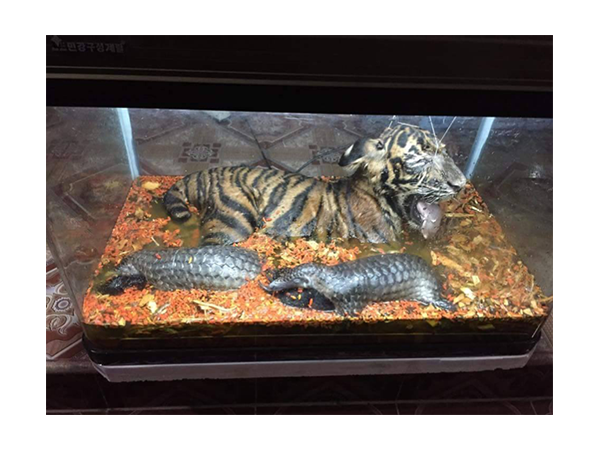
Dead tiger cub and pangolins on display
China
China’s wild tiger population remains perilously close to extinction at fewer than 50 tigers, following near extinction in the 1980s.
The key factors contributing to the decline of wild tigers in China include:
- the declaration (under Chairman Mao) of the tiger as an agricultural pest with a bounty on its head
- the killing of tigers for their bones to supply a legal domestic trade in raw bone and mass produced tiger bone pills, wine and plasters.
As China’s wild tiger population dwindled, the Government’s response was to finance the first tiger farm in 1986, primarily to supply bones for medicinal use. There are now over 6,000 tigers in captivity in more than 200 facilities.
The scale of demand and an apparent preference for wild tiger meant there has been enormous pressure on populations in neighbouring countries.
In the wake of the coronavirus, the Government of China announced a ban on trade of wildlife for consumption as food, which is an encouraging step. It does not go far enough and we support calls from inside China and globally to see a ban extended to all trade, including a ban on the use of tigers and other wildlife in the production of traditional medicines.




Sanhong’s “Real Tiger Wine”, made with captive tiger bones, which they claim they have permission to make, China

China allows the skins of captive bred tigers to be turned into rugs and taxidermy items. The taxidermist offering this skin to investigators explained how the licensing system could be used to launder illegally sourced skins

Captive tigers in one of China’s biggest farms
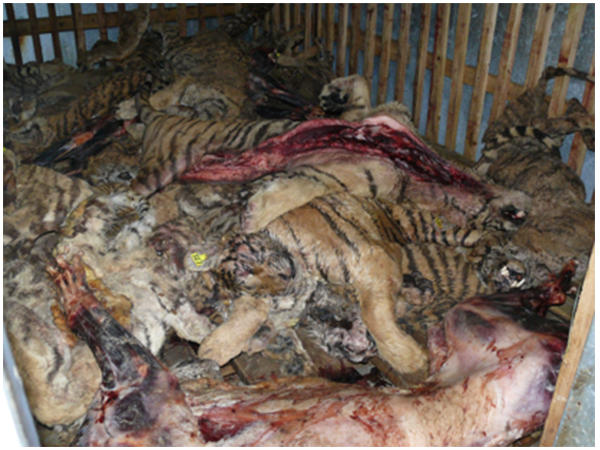
Carcasses in the freezer at one of China’s largest tiger farms
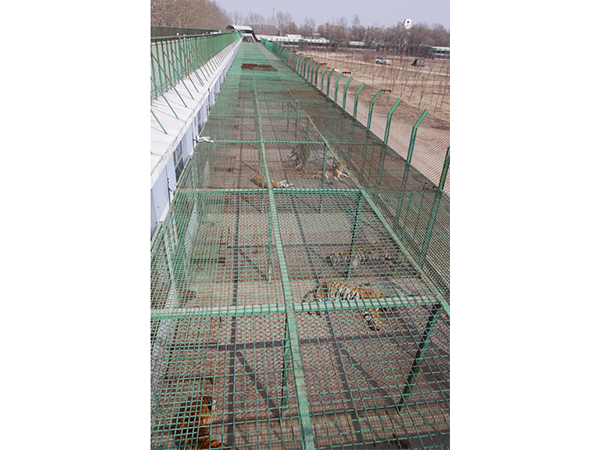
Captive tigers at one of China’s largest speed-breeding farms
Recommendations
Legislation, regulations and policy should be strengthened and financed to:
• End the domestic trade and use of tiger and other big cat parts and derivatives, including from captive specimens and non-native species
• Treat processed derivatives that are labelled as, marketed as, or claim to contain tiger or other Appendix I big cats, as “readily recognisable derivatives” to enable confiscation, arrest and prosecution
• Prohibit further growth of commercial captive tiger facilities and close those found to be involved in tiger trade
• Enable the phase-out of existing commercial captive tiger facilities and, in the interim, ensure transparent, rigorous monitoring and inspection of captive tiger facilities, including the centralisation of databases of the captive tiger population, their stripe pattern and individual DNA profiles
• Facilitate action against trade in tiger parts and derivatives online and via social media platforms
• Destroy stocks of tiger and other big cat parts and derivatives held by the tiger farming and processing businesses and Government stockpiles that are not required for forensic and prosecution purposes.
Governments and donors should ensure adequate funds to support:
• Investigation and enforcement that results in arrests, prosecution, conviction and seizure of assets of individuals and businesses involved in illegal tiger trade
• The development of forensic tools to profile individual tigers in captivity and determine lineage when tiger parts and cubs are seized to facilitate international enforcement efforts
• Targeted consumer behaviour change programmes to reduce demand for parts and products of tigers and other big cats
Parties to CITES are urged to:
• Support the CITES missions to scrutinize tiger farms by providing technical expertise and financial assistance
• Propose further time-bound, country-specific actions to ensure implementation of CITES Resolutions and Decisions, with the objective of ending tiger farming, trade and demand
• Evaluate progress against a more robust set of indicators and be prepared to call for CITES trade suspensions.
On the Butcher’s Block
Download the full report, detailing the results of our investigations. This includes references and picture credits.
On the Butcher’s Block
Download the full report, detailing the results of our investigations. This includes references and picture credits.


